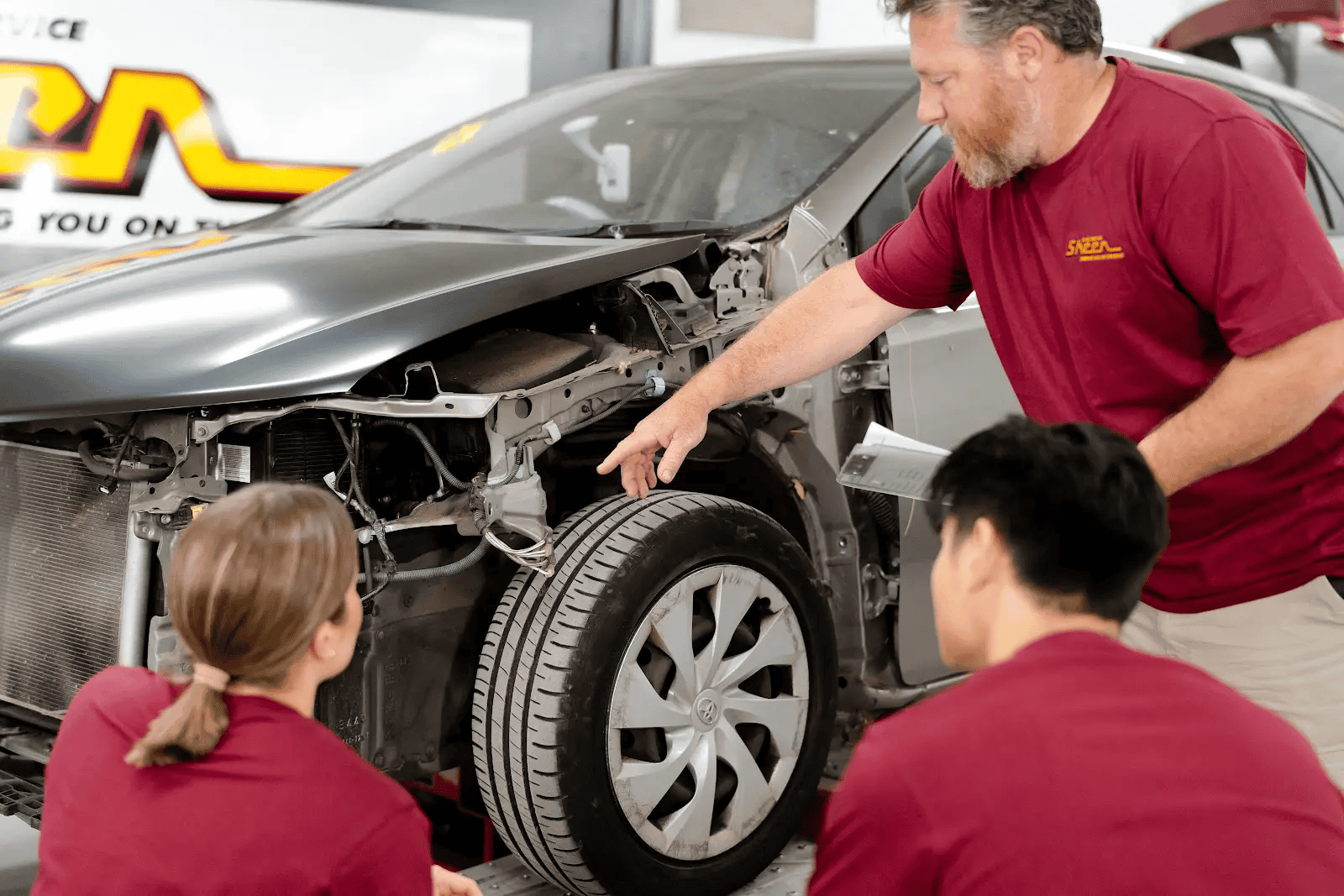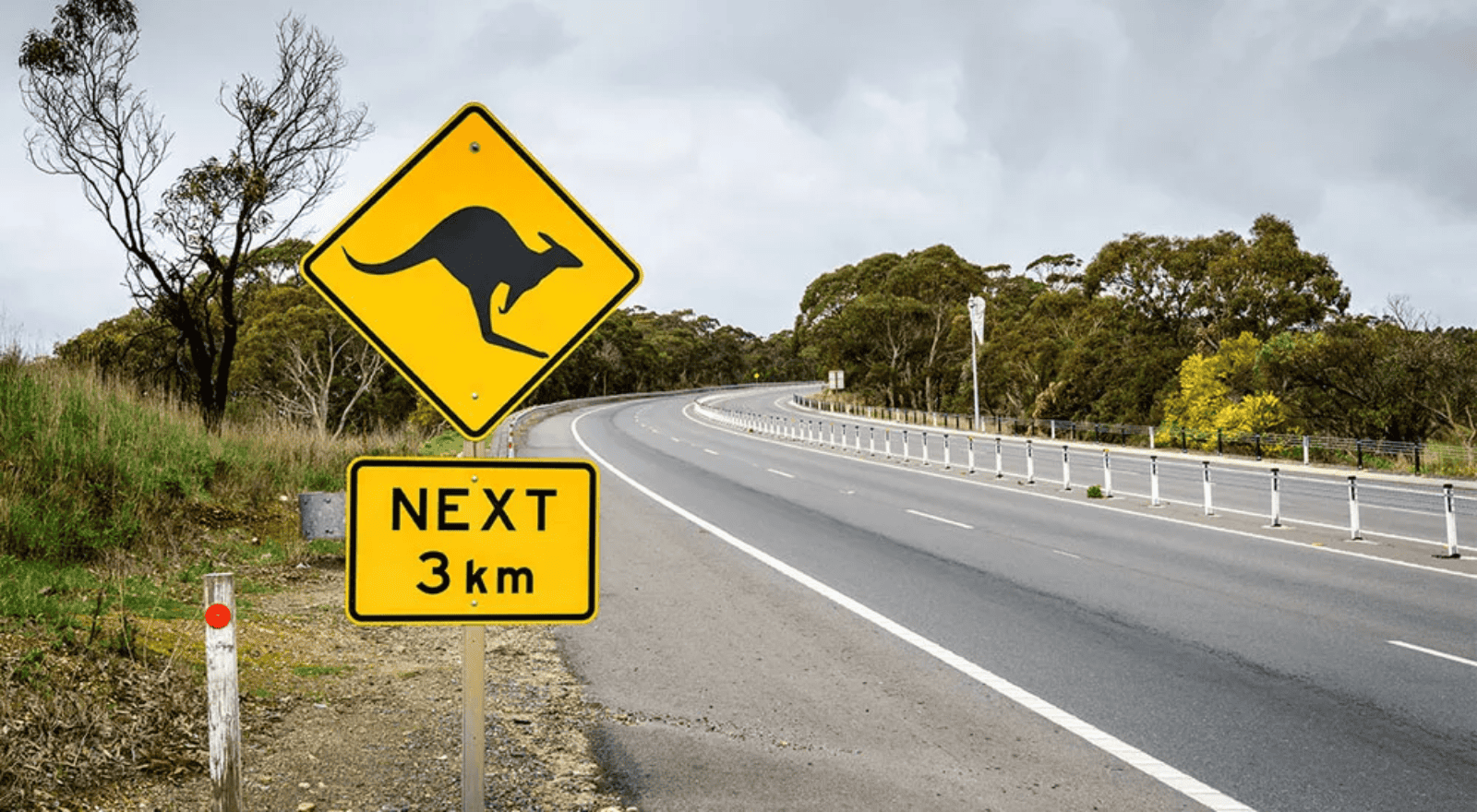Sheen Resources


Australia's unique biodiversity and vast distances means that sometimes, animals and vehicles come into contact. In fact, around 5% of all car accidents on Australia roads involve animals, with kangaroos accounting for 8 out of 10 of these collisions.
What Victoria's drivers need to know about car insurance and wildlife accidents
Australia’s roads can take you through some of the world’s most spectacular and diverse landscapes, but they also bring you closer to the country’s unique and often unpredictable wildlife. If you’ve hit an animal on the road while driving in or around Melbourne, you’re not alone. These types of incidents are more common than many people realise, and they can leave you shaken, uncertain, and wondering how your car insurance comes into play.
We’ve been repairing vehicles and supporting drivers across Victoria for more than 50 years, and a good part of our work includes helping insurance customers navigate claims after animal-related accidents. Our team understands what general insurance products typically include, how to spot damage others might miss, and how to get you back on the road safely.
We also understand the impact these accidents have, not just on your car, but on wildlife too. According to Wildlife Victoria, more than 50,000 animals were reported injured or killed on Victorian roads between 2018 and 2023. That number rose by 24% in just one year, between 2022 and 2023 — a sharp reminder that this is not a niche issue. It’s happening more often, and to more drivers.
In this guide, we’ll walk you through what to do after hitting an animal, how your car insurance policy may help, and how Sheen can support you with towing, repairs, and claims without the red tape or runaround.
[sheen_usps][/sheen_usps]
Can car insurance help if you hit an animal?
In most cases, yes, but it depends on your level of cover.
Comprehensive car insurance cover usually includes damage caused by a collision with an animal. This includes hitting wildlife like kangaroos, wombats, or possums (all of which are common sources of collisions with wildlife), as well as domestic animals like dogs or livestock. Third-party property policies, on the other hand, typically do not cover damage to your vehicle in this situation.
If you’re not sure what your policy includes, it’s worth checking your Product Disclosure Statement (PDS) or contacting your insurer directly. And if you’d rather not sit on hold, Sheen can work with your insurer on your behalf and get things moving faster.

Is hitting an animal an at-fault accident?
Generally, no. If you accidentally hit an animal while driving, your insurer will usually not treat it as an at-fault accident. You’re not likely to be penalised the way you would be if you rear-ended another driver. We’ll help you figure out your not-at-fault insurance claims.
What your insurer looks at
That said, your insurance premium could still increase, especially if it’s not your first claim. Because insurers can’t recover costs from an animal (for obvious reasons), they may factor the risk into your future pricing. You may also be required to pay an excess, and depending on your insurer, this may cover associated rehabilitation and medical costs for injured animals.
If you were speeding, under the influence, or driving recklessly, your insurer may deny the claim. Same goes if you leave the scene and don’t report the incident, so it’s always best to do the right thing.
How to make a car insurance claim after hitting an animal
If you've never claimed car insurance after a wildlife incident, the process might feel a bit daunting, but it's more straightforward than you might think. This section outlines the essential steps to take, both at the scene and when submitting your claim, to help you get back on the road quickly and with confidence.
What to do at the scene
Once you’re safe and the animal has been looked after:
- Take photos of the damage from all angles.
- Record the date, time, and location. These are essential details for any accident involving an animal.
- Get a police or wildlife report number.
Lodging your claim
Most insurers allow claims through their website or mobile app. Provide all details clearly and honestly. If the process feels overwhelming, Sheen can handle it all for you, including navigating any animal collision claims paperwork.

How Sheen helps with animal-related vehicle damage
We’ll liaise with your insurer, manage the back-and-forth, and keep you in the loop, ensuring your comprehensive car insurance policy works the way it should in the case of animal collision claims.
We work with your insurer
As a trusted repair partner, Sheen works directly with most major insurers. That means fewer phone calls for you and faster turnaround on claims and approvals. We know how to speak their language.
Towing, repairs and replacements
If your car isn’t drivable, we’ll arrange towing to your nearest Sheen location.
Then, our smash repair specialists will take care of the damage for you. Our panel beaters deliver high-quality, manufacturer-approved repairs on everything from light bumper scrapes to full front-end rebuilds, including damage caused by collisions with wildlife.
Need a set of wheels while yours is in the shop? We’ve got accident replacement vehicles ready to go.
[upload_smash][/upload_smash]
What to do immediately after hitting an animal
Even if the incident feels minor, your next steps are important for your safety, the animal’s well-being, and your insurance claim.
How to assess the situation safely
- Pull over when safe to do so. Turn on your hazard lights and park well off the road.
- Check on the animal (from a distance, for your safety). Injured wildlife or pets can be unpredictable. Don’t go playing wildlife ranger unless you know what you're doing — an animal may lash out if it feels threatened.
- Make the road safe. If the animal is deceased and you’re able to safely move it off the road, do so. If not, call local authorities or police for help to remove the animal from the road.
- Check for Joeys. Marsupials like kangaroos and wombats may be carrying young in their pouches, and they’re not always visible at first glance.
- Document the incident. Take clear photos of the injured or dead animal, the damage to your car, and the surrounding area. Jot down the time, location, and road conditions.
- Contact wildlife rescue or the police. Here are the details for your local wildlife rescue organisation if the animal is seriously injured or a pet can’t be identified. You can reach Wildlife Victoria’s 24/7 Emergency Response Service on (03) 8400 7300 for immediate assistance with injured wildlife.
What types of animals are you most likely to hit in Victoria?
Victoria is home to an impressive (and sometimes inconvenient) range of native species, many of which are active near roads, particularly in rural and regional areas.
Worst time for kangaroos on roads
Kangaroo collisions are most common at dawn and dusk, when visibility is low and wildlife is most active. They can move erratically, travel in groups, and leap in front of your car with zero warning, all of which makes them one of the most dangerous animals to encounter on the road.
Other animals commonly involved in collisions with animals include:
- Possums: especially in suburban areas at night
- Wombats: built like little tanks and low to the ground
- Wallabies and echidnas: found in forested or hilly roads
- Stray pets or livestock: dogs, cats, sheep, cows — you name it
Can hitting an animal damage your car (and how bad can it get)?
Yes. Even a small animal can cause more damage than you might think, especially if you’re travelling at speed, and the costs of repairing your car can quickly add up, particularly if you don’t have the right insurance for animal impacts.
Can hitting a possum damage your car?
Absolutely. Possums are quick, elusive, and often dart across roads with little warning. A collision can result in:
- Cracked or dislodged front bumpers
- Damaged undercarriage components
- Broken lights, sensors, or plastic grille panels
It might not look serious at first, but possum impacts can cause hidden damage that affects your car’s safety systems.
Larger animals, bigger risks
- Kangaroos can crush bonnets, smash windscreens, and trigger airbags
- Wombats are dense and low; a direct hit can mess with your suspension and steering
- Livestock or dogs may result in significant front-end or side-panel damage
Even if your car seems drivable, don’t risk it. In the event of a collision, hidden damage can compromise your vehicle's safety. Have it checked by the team at Sheen, we’ll spot things you might not and help you determine whether you’re eligible for a comprehensive car insurance policy benefit.
A few bonus tips: How to reduce your risk of hitting wildlife
Kangaroo car protection tips
Some animal encounters are unavoidable, especially on a road in Australia. But you can reduce your chances of a collision with a few smart moves to avoid animal collisions:
- Avoid driving at dawn or dusk on country roads
- Use high-beam headlights (when safe and legal) to improve visibility
- Install a roo bar if you live or work in a high-risk zone
- Slow down when signs warn of wildlife
- Never swerve sharply: brake in a straight line to stay in control
A few precautions can go a long way for your safety and the animal’s.
Hit an animal? Let Sheen help you get back on the road
Whether it’s a possum in Preston or a kangaroo in Kyneton, hitting an animal can leave you rattled. Whether you’re dealing with an animal car accident, vehicle damage, or just need fast advice, get Sheen on the phone.
From emergency towing to high-quality repairs, we’re here to get Melbourne drivers back on the road without the hassle, and support you through your comprehensive car insurance claim if needed, no matter where you are across Australia. And if you need a hire car while yours is being assessed or repaired, we’ve got you covered.

.png)




.webp)
.webp)













